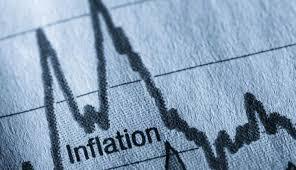News / National
Inflation slowdown boosts confidence in ZiG stability
28 Aug 2025 at 05:54hrs |
0 Views

Zimbabwe recorded a marked slowdown in price growth in August, strengthening government claims that currency reforms are beginning to stabilise the economy, despite year-on-year inflation remaining high.
Data released by the Zimbabwe National Statistics Agency (ZimStat) shows that month-on-month inflation in ZiG terms fell to 0,4 percent in August, down sharply from 1,6 percent in July. Food prices in local currency slipped into negative territory, while non-food inflation also eased.
The ZiG Consumer Price Index (CPI) rose modestly to 191,65 in August from 190,89 in July, compared with 98,90 in the same period last year. The moderation comes as the Reserve Bank of Zimbabwe (RBZ) continues tightening liquidity and managing the exchange rate to reinforce confidence in the ZiG.
"Month-on-month inflation has slowed consistently since mid-year, which is evidence that monetary reforms are having a positive impact," said economist Tinevimbo Shava. "The annual figure is still high at 93,8 percent, but the downward trend shows policy traction. If maintained, this will help restore confidence in the ZiG over time."
Inflation in the US dollar index, which captures a significant share of urban household spending, registered 0,0 percent in August, down from 0,3 percent in July. On an annual basis, the USD index rose 14,2 percent, reflecting imported cost pressures but remaining far below ZiG inflation.
ZimStat's Weighted Consumer Price Index — which combines ZiG and USD inflation to reflect Zimbabwe's hybrid economy — recorded no month-on-month growth in August, compared with 0,6 percent in July. Annual inflation under the weighted index stood at 27,6 percent.
"This is where we see the strongest evidence of progress," said analyst Namatai Maeresera. "The weighted index is what most households experience on the ground. A stable month-on-month outcome demonstrates that inflationary pressures are being tamed, even if the year-on-year figure is still elevated."
ZiG-denominated food inflation fell 0,1 percent month-on-month, while dollar-based food prices edged up 0,3 percent, effectively offsetting each other in the combined measure. Non-food categories such as transport, utilities and clothing also recorded subdued increases, a trend analysts attributed to restrained consumer demand and government interventions to contain fuel costs.
Officials credited improvements in agricultural output and stronger local supply chains for easing food price pressures, arguing that domestic production is beginning to reduce reliance on imports vulnerable to global price shifts.
The RBZ maintains that the ZiG, introduced in 2024, will hold if fiscal and monetary discipline is sustained. Government officials argue that while annual inflation remains elevated, it reflects legacy instability more than current market dynamics.
"The reality is that the pace of inflation is slowing, and that is the real test of whether reforms are working," said Maeresera.
Economists believe that if the current trajectory holds, Zimbabwe could enter 2026 with its most stable inflation profile in over a decade. "Zimbabwe still faces structural challenges, but August's figures demonstrate that policy stability, agricultural recovery, and currency management can bring inflation under control. What matters now is staying the course," Shava said.
Data released by the Zimbabwe National Statistics Agency (ZimStat) shows that month-on-month inflation in ZiG terms fell to 0,4 percent in August, down sharply from 1,6 percent in July. Food prices in local currency slipped into negative territory, while non-food inflation also eased.
The ZiG Consumer Price Index (CPI) rose modestly to 191,65 in August from 190,89 in July, compared with 98,90 in the same period last year. The moderation comes as the Reserve Bank of Zimbabwe (RBZ) continues tightening liquidity and managing the exchange rate to reinforce confidence in the ZiG.
"Month-on-month inflation has slowed consistently since mid-year, which is evidence that monetary reforms are having a positive impact," said economist Tinevimbo Shava. "The annual figure is still high at 93,8 percent, but the downward trend shows policy traction. If maintained, this will help restore confidence in the ZiG over time."
Inflation in the US dollar index, which captures a significant share of urban household spending, registered 0,0 percent in August, down from 0,3 percent in July. On an annual basis, the USD index rose 14,2 percent, reflecting imported cost pressures but remaining far below ZiG inflation.
ZimStat's Weighted Consumer Price Index — which combines ZiG and USD inflation to reflect Zimbabwe's hybrid economy — recorded no month-on-month growth in August, compared with 0,6 percent in July. Annual inflation under the weighted index stood at 27,6 percent.
"This is where we see the strongest evidence of progress," said analyst Namatai Maeresera. "The weighted index is what most households experience on the ground. A stable month-on-month outcome demonstrates that inflationary pressures are being tamed, even if the year-on-year figure is still elevated."
ZiG-denominated food inflation fell 0,1 percent month-on-month, while dollar-based food prices edged up 0,3 percent, effectively offsetting each other in the combined measure. Non-food categories such as transport, utilities and clothing also recorded subdued increases, a trend analysts attributed to restrained consumer demand and government interventions to contain fuel costs.
Officials credited improvements in agricultural output and stronger local supply chains for easing food price pressures, arguing that domestic production is beginning to reduce reliance on imports vulnerable to global price shifts.
The RBZ maintains that the ZiG, introduced in 2024, will hold if fiscal and monetary discipline is sustained. Government officials argue that while annual inflation remains elevated, it reflects legacy instability more than current market dynamics.
"The reality is that the pace of inflation is slowing, and that is the real test of whether reforms are working," said Maeresera.
Economists believe that if the current trajectory holds, Zimbabwe could enter 2026 with its most stable inflation profile in over a decade. "Zimbabwe still faces structural challenges, but August's figures demonstrate that policy stability, agricultural recovery, and currency management can bring inflation under control. What matters now is staying the course," Shava said.
Source - The Chronicle
Join the discussion
Loading comments…
























